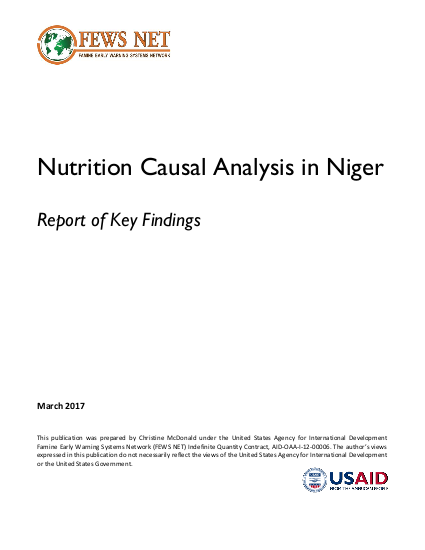
Levels of acute malnutrition remain persistently high throughout Niger. The 2012 DHS revealed that the national prevalence of wasting among children under 5 was 18.0%; the more recent 2014 National Nutrition Survey reported a slightly lower level of 14.8%. Despite the fact that parts of Maradi and Zinder are often referred to as the “bread basket” of the country, both regions exhibit levels of child wasting above the national average. Given the large burden of acute malnutrition and the severity of its consequences, a strong understanding of the causes of undernutrition in Niger is critical. Although the UNICEF conceptual framework serves as a useful paradigm for conceptualizing the main categories and levels of causes, there is a clear need to identify specific risk factors and understand their relative importance in order to design and target the most effective interventions to combat acute malnutrition in this particular setting.
In collaboration with local partners in Niger, FEWS NET conducted a Nutrition Causal Analysis (NCA) study to better understand the key factors that are driving the perpetually high burden of acute malnutrition in the agropastoral and agricultural livelihood zones of Maradi and Zinder.